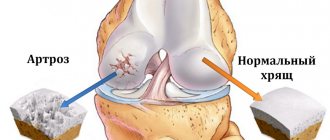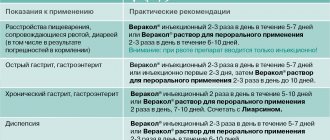Ascites is the most severe pathology of dogs, which occurs as a result of some abnormal process on the part of the internal organs. The condition is dangerous because a large amount of fluid accumulates in the abdominal cavity. In average dogs, the volume can reach up to 10 liters or more. If ascites is left unattended, it will threaten the animal’s life.
Let's look at what most often causes ascites in a dog. How to determine what exactly is fluid in the abdominal cavity, what measures to take and whether it is possible to save the animal or extend its life.
What is ascites in a dog
Dropsy of the abdomen is not a disease, it is a condition that develops and accompanies other diseases. The accumulation of fluid provokes compression of the internal organs, as a result of which the body’s functioning is disrupted. The condition can be triggered by various serious diseases. Sometimes abdominal ascites is the first sign to identify more serious ailments in a dog.
How to protect your pet?
There are no preventive measures against abdominal hydrops. You should visit a veterinary hospital in a timely manner and get tested regularly. This will allow you to immediately identify diseases in your pet.
A sick dog needs extra attention. If surgical intervention is necessary, it is important to agree with the doctor so as not to risk the life of your pet. After surgery, active therapy is required.
The veterinarian will provide a list of necessary medications, give instructions, and nutritional recommendations. Owners must understand that the health of the animal depends on their care and love. Self-medication with human medications should not be practiced.
Causes of ascites in dogs
The development of abdominal hydrops in healthy dogs is impossible; such cases have not been recorded in veterinary practice. Dogs often die from this condition because their owners mistook the external signs for pregnancy or obesity. To avoid such consequences, you need to understand why a dog may develop ascites:
- Peritonitis is an inflammation of the peritoneal lining, fluid accumulation occurs due to loss of elasticity of the walls of blood vessels;
- Benign and malignant neoplasms, abscesses in the abdominal area. The presence of a tumor provokes disturbances in the outflow of lymph. The condition is very dangerous in the presence of abscesses, which can burst at any moment. The entire contents of the abscess accumulate in the abdominal cavity and intoxication of the animal’s body develops;
- Liver disorders. Any problems with this organ in dogs can cause ascites. The organ loses its ability to filter lymph. Due to slow filtration, stagnation occurs; over time, fluid begins to leak into the abdominal cavity;
- Kidney disorders. Pathologies of this organ can provoke excessive excretion of protein from the body. Lack of protein can cause fluid to accumulate in the abdomen;
- Cardiac ascites. In this case, the accumulation of water is accompanied by disturbances in the functioning of the heart. The body cannot cope with blood circulation, which is why stagnation develops.
- Protein fasting. Lack of a sufficient amount of this substance in a dog's diet can also be a provocateur of ascites.
Read Removing the fifth toe from a puppy and an adult dog: 3 stages
Of course, it is impossible to identify the cause on your own; any self-medication can lead to the death of the animal. The cause is determined through laboratory and instrumental diagnostics in a veterinary clinic. In this case, the specialist collects an anamnesis, which includes a description of the symptoms.
Abdominal dropsy. Ascites
Abdominal dropsy, ascites (Ascitis) is a chronic secondary disease associated with difficulty in resorption of peritoneal fluid into the blood and lymph circulation system and the accumulation of this fluid in the abdominal cavity.
All types of farm animals and birds suffer from ascites, but the disease is most often recorded in dogs, sheep, pigs and less often in large animals.
Etiology . The cause of ascites in animals is obstruction of the outflow of peritoneal fluid. The outflow of fluid depends on the state of the portal circulation and normal heart function. The disease in animals is registered with diseases of the liver, heart, kidneys, lungs and blood vessels located in the abdominal cavity of the animal. In case of chronic diseases of the heart, liver, kidneys (liver cirrhosis, amyloidosis), tumors, fascioliasis, echinococcosis and other organs, animals may develop general venous stagnation. With venous stagnation in animals, transudate leaks into the subcutaneous tissue and all body cavities, causing dropsy. Ascites in piglets occurs due to edematous disease. The occurrence of the disease is facilitated by increased permeability of the walls of blood vessels, hydremia, and a lack of vitamins K and C in the body.
Pathogenesis . The pathogenesis of ascites is based on functional liver failure, disruption of water-salt and protein metabolism, as well as damage to the vascular system of the peritoneum and its mesothelial cover. A large accumulation of fluid in the abdominal cavity also leads to difficulty in the functioning of the circulatory organs, both in the portal and systemic circulation, causing restriction of the movement of the diaphragm, as well as inhibiting the motor activity of the stomach and intestines.
Clinical picture . For abdominal dropsy, a characteristic symptom is a gradual, over several months, symmetrical increase in the volume of the abdomen. When conducting a clinical examination of an animal with ascites, the veterinarian is struck by a symmetrical bilateral protrusion of the lower and lateral surfaces of the abdominal wall, sometimes the retraction of the iliac fossae, and the back of the sick animal bends. The animal experiences rapid fatigue, swelling of the limbs and emaciation of the animal. Sick animals with ascites reluctantly change their position, and small ones either tend to lie down or sit.
On clinical examination, the visible mucous membranes are pale at the beginning of the disease, then become cyanotic (cyanotic). Pulse and breathing are rapid and weakened. When percussing the area of ascites, we obtain a dull percussion sound that has a horizontal line of dullness; when the position of the body in space changes, the line of dull percussion sound changes.
When auscultating the intestines, bowel sounds are not audible or are greatly weakened. In the absence of complications, the temperature of a sick animal is always normal. A sick animal periodically has cases of tympany and constipation, the animal refuses or is reluctant to eat the offered food. When palpating the area of ascites, we register fluid fluctuations. Upon test puncture, we obtain a straw-yellow liquid that contains a small amount of protein. The appearance of jaundice in a sick animal is a sign of an unfavorable outcome of the disease.
Pathoanatomical changes . During a post-mortem examination of dead adult animals, we find a large amount of yellowish, rarely reddish fluid in the abdominal cavity (up to 20 liters in dogs and up to 100 liters in horses). The fluid contains few blood cells and some protein (1-20). At the beginning of the disease, albumin predominates in the fluid, and globulins predominate in the final stage.
The surface of the peritoneum was not changed upon examination. We find damage to the liver, heart, kidneys and other organs, which are the main cause of ascites in animals.
Diagnosis . Veterinary specialists make a diagnosis of ascites based on the clinical symptoms of the disease, which we establish during a clinical examination (palpation, percussion and auscultation). Carrying out a diagnostic puncture of the abdominal wall in the area of ascites, ultrasound, x-ray, and urine analysis.
Differential diagnosis . A veterinarian must differentiate ascites from pregnancy and bladder enlargement, which can be ruled out by performing a rectal examination. We exclude chronic peritonitis and internal bleeding (by examining the transudate with a test puncture).
Owner stories
Tatyana : “At first, our dog began to lose weight, although she ate as usual. We went to the clinic, where we heard a disappointing diagnosis - there was a malignant neoplasm in the liver. After some time, I noticed that the dog’s belly had become enlarged. We went to the doctor again. The dog had an ultrasound and the doctor said that all organs were “floating” in ascites fluid. Immediately after the study, the fluid was pumped out, but the doctor warned that this condition would recur. Every 2 months we came to pump out this liquid. They gave me medications to stabilize my condition and diuretics. A year later, our dog was gone.”
Vadim : “My male dog was 12 years old. I began to notice that he breathes through his mouth all the time, even when it is not hot and when he is calm. I called a doctor, he took blood tests, but all the main indicators were normal. Then the dog was prescribed another heart test and it turned out that he had developed heart failure. They prescribed heart medications, I gave them to the dog at home with food. Six months later, the condition worsened again - again he was breathing heavily, did not eat, and his stomach was still swollen. We went to the clinic, it turned out that ascites had been added to the heart problems. The doctor explained how to deal with the problem - periodically pump out the fluid. So I came once a month for this procedure. The dog got worse each time and he had to be euthanized.”
Views: 992
Prevention
There is no prevention against dropsy; it is not the main disease, but a concomitant pathology.
To prevent any underlying disease it is important:
- completely eliminate salt from the diet;
- give the required amount of protein food every day;
- food should be balanced, fresh, regular;
- do not overfeed your pet;
- walk at least twice a day, the duration of one walk is at least an hour;
- the walk should be active.
If at least one of the symptoms appears, contact the clinic to rule out any disease, or start treatment on time.
Symptoms of ascites in a dog
Ascites is a very difficult period in the life of any animal. The condition occurs with severe symptoms and external signs. The following symptomatic picture is typical for abdominal dropsy in a dog:
- Severe bloating and protruding sides. In large dogs, this is difficult to notice in the initial stage, but ascites in a dachshund, for example, should be noticeable literally in the first day.
- Dyspnea. If dropsy develops slowly, then at first the dog will suffocate when running, and then it gets worse. Shortness of breath torments the dog even when it is just lying down.
- Due to breathing problems, your pet spends a lot of time sitting; this position allows him to breathe more easily.
- Change in color of mucous membranes. They usually turn blue, but if ascites is caused by liver problems, the color will be yellow.
- Swelling. May be a sign of ascites if the dog has other symptoms.
- Dropsy due to kidney failure may be characterized by high water consumption and frequent trips to the toilet.
- Slow, often painful movement. This condition causes the dog to reduce activity, and over time, general exhaustion is characterized by lethargy, drowsiness, and apathy.
- Decreased appetite.
Despite the lack of appetite, the animal's body weight continues to grow. This is associated with the progression of dropsy. Sometimes, due to ascites, the body is poisoned and the dog begins to vomit. The presence of such symptoms is a signal for an urgent visit to the veterinarian.
What are the chances of complete healing?
Any owner who has encountered abdominal dropsy in their pet is probably interested in how long dogs with ascites live.
The prognosis will directly depend on the cause that caused the ascites, as well as on the condition of the animal (how many unpleasant symptoms accompany the accumulation of fluid). If, for example, an elderly dog has fluid accumulated inside the peritoneum due to cirrhosis of the liver or failing kidneys, this is a death sentence in most cases, unfortunately. However, young and strong dogs are able to recover from ascites with timely treatment. There is every chance of full recovery if ascites was caused by worms, injuries or excess weight. Moreover, great responsibility lies on the owner’s shoulders, because the sooner the dog is in the hands of a doctor, the better. Therefore, at the slightest suspicion of ascites, it is important to get to the veterinary clinic as soon as possible.
What to feed
If the appetite is preserved, then the dog is given food rich in protein. It could be chicken or turkey breast. They are pre-boiled or simply doused with boiling water. Carbohydrates and fats are reduced to a minimum. For porridges, you can add a little buckwheat or rice. Salt is completely excluded.
Appropriate industrial therapeutic diets are prescribed if the underlying disease is identified.
The dog's fluid intake should be reduced by pouring smaller amounts into the bowl and limiting access to water sources.
Diagnostics
A visit to the veterinarian begins with interviewing the dog's owner to describe the symptoms. Next, an external examination takes place with a detailed medical history. Usually these actions are sufficient to determine the diagnosis, but not complete. Ascites in dogs can be caused by various reasons; additional studies are carried out to identify the causes:
- Ultrasound examination of the abdominal cavity;
- X-ray of the abdomen;
- Puncture with collection of fluid accumulated in the abdomen;
Read How to recognize allergies in a toy terrier: the best treatment methods
Additionally, cardiac echocardiography may be prescribed. Research helps to make an accurate differential diagnosis; resorting to treatment without making a diagnosis is prohibited.
You might be interested
Diarrhea in a dog - how to treat it and why it occurs
Diarrhea or diarrhea in a dog is a very annoying phenomenon. On top of everything else, it can greatly …read more
What is a dog's normal body temperature and how to measure it
The easiest way to determine the well-being and health status of a dog is to measure its temperature. But you need to take into account that ...read more
The dog sheds a lot - should you worry and what to do?
When purchasing a dog for home, you should be prepared for any “surprises”, including periodic shedding ...read more
Treatment regimen for ascites in dogs
Based on the diagnosis, the veterinarian prescribes treatment. The principle is that it is not the ascites itself that is treated, but the causes of its occurrence. This therapy consists of taking medications and performing surgery. Some veterinarians allow the use of folk remedies, although their effectiveness has not been proven. Before carrying out such measures, the veterinarian may perform a procedure for pumping out fluid from the abdomen, but this will only provide temporary relief.
If ascites is detected, the veterinarian must prescribe a special diet for the dog to avoid complications.
Treatment with drugs
In the vast majority of cases, the veterinarian prescribes diuretics (diuretics), as well as antihypertensive drugs. Typically, specialists prescribe the following drugs:
- Diacarb, Dichlorothiazide, Furasemide, Veroshpiron (diuretics);
- Losartan (antihypertensive drug);
- Sulphocamphocaine, Cordiamin (analeptics);
The choice of a specific drug, dosage and duration of administration is determined by a specialist depending on the condition of the dog. To maintain the normal functioning of the body, hepatoprotectors and cardioprotectors can be prescribed.
In case of dehydration, an infusion of an isotonic solution is given. If severe breathing problems are observed, the dog is given an oxygen mask to stimulate breathing. In case of blood infection due to ascites, a blood transfusion may be performed.
Laparocentesis
The procedure can save the animal’s life in emergency cases. The operation of laparocentesis involves pumping out accumulated fluid in the dog's abdominal cavity. Carrying out the procedure gives time for full treatment of the root causes of dropsy. The scheme for performing laparocentesis is as follows:
- Preparing for the procedure. The dog is given sedatives. In the area of the procedure, the hair is shaved and treated with an antiseptic.
- Insertion of a catheter needle. It is inserted almost along the white line of the abdomen, but slightly from the side. Usually the contents of the dog's belly will begin to come out on their own, but if not, the veterinarian will gently press on the belly.
- Complications may occur during the procedures. The dog may become ill and may develop heart failure. An experienced veterinarian will never perform an operation on his own; there must be at least two specialists or an assistant.
Read Etiology of actinomycosis in dogs: signs, therapy and prevention
After the operation, the dog will begin to feel much better. This condition will not last long and the causes of this condition must be treated.
Folk remedies for home treatment
Treatment at home involves taking medications prescribed by a veterinarian. Folk remedies cannot be used without the permission of a doctor, and he is not responsible for the result of such manipulations. Reviews on forums say the opposite; dog owners talk about the effectiveness of such recipes.
To prepare a remedy for ascites you will need 800 grams of parsley and milk. The greens are placed in a bowl and poured with milk, then put in the oven preheated to 70 degrees and left for 30 minutes. Then this milk is given to the dog 200 ml once a day.
The recipe is provided for informational purposes only. We do not recommend using it without a specialist's prescription.
Treatment at home
As a rule, a veterinarian prescribes a course of antibiotics and diuretics for a sick pet. Treatment at home requires strict adherence to prescribed instructions. In case of cardiac etiology, the animal is prescribed cardiotropic drugs depending on the pathology. If the dog receives treatment at home, the owner must ensure that access to water is limited. The animal's diet should be enriched with proteins.
Watch this video about the treatment of ascites in dogs and cats:
Abdominal hydrops and its etiopathogenesis
In veterinary practice, ascites is not considered an independent disease. Dropsy is considered as a consequence of serious pathological changes in the body. With ascites, the pet’s condition worsens as a result of the accumulation of excess fluid in the peritoneal cavity - transudate, while there are no inflammatory processes in the tissues. The volume of excess liquid in some cases reaches 20 liters. If the dog is not given effective therapy as soon as possible, the prognosis for the pet is poor.
Treating ascites at home is strictly prohibited; using traditional methods will only worsen the pet’s condition. Abdominal dropsy requires only qualified veterinary care in special conditions.
Causes of abdominal dropsy in dogs
Pathology, as a rule, develops against the background of a serious illness.
Here are the most common ones:
- A cancerous tumor that is localized in the abdominal cavity. However, a cancerous process can develop in any internal organ; in this case, the growing tumor compresses the vessels, this process causes the accumulation of fluid in the peritoneum.
- Intoxication.
- Liver pathologies. When an organ stops performing its functions - filtering blood and synthesizing protein - the speed of blood movement in the vessels significantly decreases, and liquid seeps through the walls of the vessels.
- Heart pathologies. Blood stagnation is most often associated with this disease.
- Kidney pathologies. Inflammatory processes in the organ lead to blood entering the urine, as a result, the pet loses protein and dropsy develops.
- Insufficient amount of protein food.
- Peritonitis. In this case, the tightness of the vascular tissues is broken and fluid fills the peritoneum.
Clinical signs
In a dog with ascites, you can observe not only a swollen belly. A sick animal cannot breathe freely , and it is difficult for her to inhale due to the intense tension of the inspiratory muscles, but exhalation is not difficult.
With this disease, the animal may experience problems in the gastrointestinal tract in the form of:
- Constant constipation.
- Diarrhea.
If an animal develops dropsy of the brain, it does not remain in a conscious state for a long time; the clinical picture in such a case is expressed in the form of coma or lethargy. When his pet coughs, the owner can hear the gurgling of the liquid in it.
Due to the occurrence of ascites, the pet develops anorexia . During illness, the animal eats practically nothing; against the background of excessive thinness, the huge belly is very noticeable.
Tactics
Before starting treatment, the doctor prescribes the following tests - ultrasound, x-ray, sampling of abdominal fluid for tests.
Based on the data obtained, a diagnosis is made and appropriate therapy is prescribed, which is aimed at eliminating the causes of ascites.
The dosage and methods of use of drugs that relieve the main symptoms of the disease are determined by the veterinarian.
Drugs
The most commonly prescribed medications are:
- Losartan;
- Veroshpiron;
- Furosemide;
- Eufillin.
In advanced cases of ascites, laparocentesis (pumping out fluid from the abdominal cavity) is prescribed. This procedure can significantly alleviate the dog’s condition and is carried out in parallel with taking medications. Additionally, the veterinarian may recommend taking antibiotics and protein drugs.
Methods
Depending on the disease causing ascites, the following treatment methods are also used:
- taking diuretics helps remove harmful substances from the animal’s body;
- taking cardioprotectors and hepaprotectors stabilizes the functioning of the heart muscle and liver;
- diet with limited salt and liquid.
How to diagnose dropsy?
Ascites is diagnosed as follows:
- listening carefully to the dog owner's complaints;
- after analyzing the existing symptoms;
- based on the results of laboratory blood tests;
- based on the results of studying fluid taken from the abdominal cavity;
- by taking an x-ray or ultrasound.
Interesting: Doberman: history, characteristics of upbringing, character
After carefully listening to the owner and examining the animal, the veterinarian makes a conclusion whether it is ascites or not. To confirm or refute your suspicions, an ultrasound or x-ray of the abdominal cavity is performed. However, these tests can only show whether excess fluid is present or not.
It is not a fact that the detected fluid in the abdominal cavity is dropsy.
The fluid can be blood if there is internal bleeding, urine if the bladder ruptures as a result of an injury, or lymph if the lymphatic vessels are damaged.
When carrying out differential diagnosis, a puncture is made in the abdominal wall to remove some fluid for laboratory tests. If the collected fluid has a light straw color and is odorless, then in 100% of cases it is ascites. If the fluid is blood, this indicates hemorrhage in the abdominal cavity , urine indicates that the bladder or ureter has ruptured, and a milky white fluid is lymph. If purulent inflammation occurs in the abdominal cavity, the liquid will be of different colors with an unpleasant odor. An accurate diagnosis is made after laboratory tests.
The liquid studied in the laboratory very accurately diagnoses the root cause of the disease. Depending on the composition, the liquid is divided into:
- exudate;
- hemorrhagic exudate;
- transudate;
- changed transudate.
If studies indicate transudate, then diagnoses such as tumors, helminthiases, liver and intestinal diseases, portal hypertension, and renal failure are made.
If an altered transudate is confirmed, then most likely the dog is suffering from heart failure, the presence of a tumor, or portosystemic hypertension. Exudate occurs from peritonitis or tumors. Blood in the exudate indicates damage to the internal organs of the animal.
Indications for use
Indication for this procedure is the presence of free fluid in the abdominal cavity. May be accompanied by severe abdominal pain, fever, and clinical signs of shock.
Laparocentesis is a very sensitive method in the diagnosis of peritonitis, tumor formation in the abdominal cavity, pancreatitis, congestive heart failure, and intra-abdominal bleeding.
Abdominal puncture is performed under ultrasound guidance or blindly. So, if there is more than ml/kg of free fluid, the doctor performs laparocentesis without ultrasound control. With a smaller volume, a false negative result is possible, since fluid accumulates around the abdominal organs or in the omentum. It is also possible for fluid to accumulate inside peculiar pockets.
A false positive result can be obtained by puncturing the liver or spleen.
During the procedure, the doctor monitors the formation of blood clots in the lumen of the needle, since rapid blood clotting indicates damage to the abdominal organs during puncture.
Description of the pathology
Hydrops is diagnosed when fluid accumulates in the dog's chest or abdomen.
Dropsy can also affect the testicle of a male dog. This happens due to the accumulation of an excessive amount of exudate or effusion, when, due to the volume of fluid, the organ is greatly stretched, causing pain and discomfort.
The pain can be very severe, causing suffering for the pet and distress for the owner. Not only effusion and exudate, but also blood or lymph can flow into the organ.
If even a slight enlargement of the testicle, chest or abdominal cavity is detected, you should immediately visit a specialist.
Dropsy can lead to deformation of internal organs.
The causes of ascites in dogs range widely. Individuals at risk include those who:
- acute heart failure is observed;
- disturbances in the development of internal organs;
- malignant tumors in the abdominal cavity;
- liver and kidney diseases;
- presence of parasites;
- abdominal trauma;
- peritonitis;
- circulatory disorders, congestion;
- hydremia or poor blood clotting;
- low body weight on the verge of exhaustion;
- old age, age-related pathological changes in organs.
Technique
The animal is laid on its side or remains standing. The area where the needle is inserted is shaved and treated with a disinfectant solution. The puncture is carried out with a catheter to the left or right of the midline of the abdomen, slightly above or below the navel. For small volumes and the need to pump out liquid under pressure, a syringe is used. If a large amount of liquid accumulates, it drains away by gravity. By removing a large volume of free (ascites) fluid, a dramatic improvement in the animal’s well-being is possible. For example, in animals with right-sided congestive heart failure, a decrease in compression on the diaphragm is accompanied by a sharp improvement in respiratory function and stabilization of cardiac activity.
Use of diuretics
Sometimes diuretics are prescribed to remove fluid. But potassium is removed in the urine, which is released in this way. To maintain it, you need to use special diuretics. But over time, they cause an imbalance in water and electrolyte metabolism. Therefore, do not abuse such drugs.
Good results can be achieved by using protectors for cardio and liver. They help these organs function normally.
The animal's diet should not contain salt, and fluid intake should be minimal.
Treatment of ascites
This pathology is a consequence of some inflammatory process occurring in the dog’s body. Having gotten rid of the cause, dropsy will also disappear. If the animal is in a very serious condition, to alleviate it, laparocentesis is performed, which consists of pumping out excess fluid from the abdominal cavity. However, this measure is temporary , since the liquid will form again and again, and its constant removal causes the dog’s body to begin to lose protein in large quantities, further worsening the general condition of the pet.
Interesting: How long do Yorkshire terriers live?
To compensate for the loss of protein, an albumin solution is injected or the pumped out fluid is reinfused. In the latter case, 500 units of heparin are added to 50 ml of liquid and administered intravenously for two to three days. It happens that the pumped out liquid contains toxins and bacteria , so antibiotics are used, for example, cephalosporins. This method is justified by the fact that it prolongs the life of the dog and even the onset of remission is possible.
Also, diuretics should be given to remove fluid, but in this case a large amount of potassium is removed from the body. To preserve it, diuretics are prescribed to preserve it, but this is also not a solution. They cause dyshormonal disorder.
Cardio- and hepaprotectors that support the heart muscle and liver function provide good results. The animal's diet should be salt-free, and the amount of liquid consumed should be reduced.
Although dropsy often occurs with incurable diseases, the dog owner and the veterinarian can work together to maintain the animal’s body in satisfactory condition for some time, improving its quality of life.










